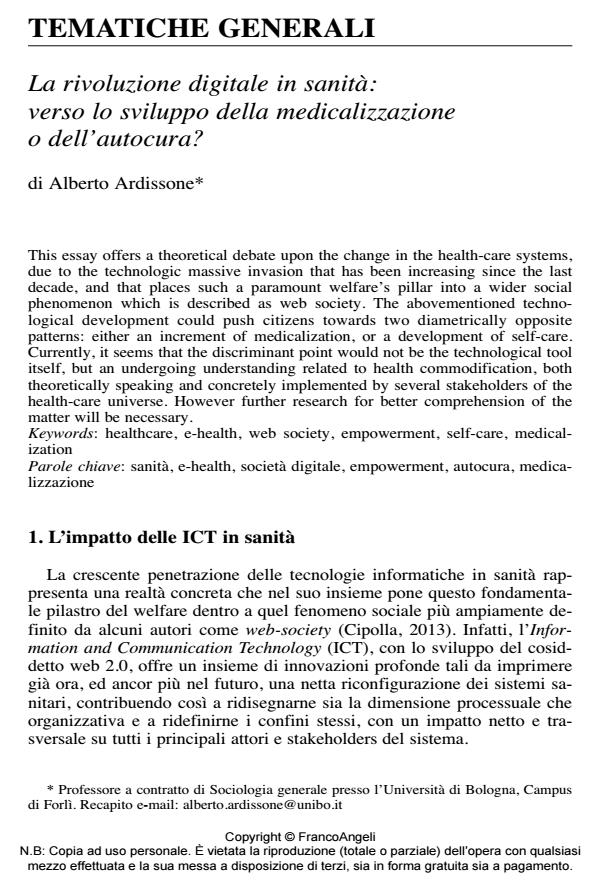La rivoluzione digitale in sanità: verso lo sviluppo della medicalizzazione o dell’autocura?
Journal title SALUTE E SOCIETÀ
Author/s Alberto Ardissone
Publishing Year 2015 Issue 2015/2
Language Italian Pages 12 P. 179-190 File size 78 KB
DOI 10.3280/SES2015-002015
DOI is like a bar code for intellectual property: to have more infomation
click here
Below, you can see the article first page
If you want to buy this article in PDF format, you can do it, following the instructions to buy download credits

FrancoAngeli is member of Publishers International Linking Association, Inc (PILA), a not-for-profit association which run the CrossRef service enabling links to and from online scholarly content.
This essay offers a theoretical debate upon the change in the health-care systems, due to the technologic massive invasion that has been increasing since the last decade, and that places such a paramount welfare’s pillar into a wider social phenomenon which is described as web society. The abovementioned technological development could push citizens towards two diametrically opposite patterns: either an increment of medicalization, or a development of self-care. Currently, it seems that the discriminant point would not be the technological tool itself, but an undergoing understanding related to health commodification, both theoretically speaking and concretely implemented by several stakeholders of the health-care universe. However further research for better comprehension of the matter will be necessary.
Keywords: Healthcare, e-health, web society, empowerment, self-care, medicalization
- Un paradigma cittadino-centrico nella m-Health Costantino Cipolla, Alberto Ardissone, in SALUTE E SOCIETÀ 2/2017 pp.11
DOI: 10.3280/SES2017-002002 - Prospettive di empowerment per la salute: alcune proposte teoriche Alberto Ardissone, in SALUTE E SOCIETÀ 1/2017 pp.163
DOI: 10.3280/SES2017-001012
Alberto Ardissone, La rivoluzione digitale in sanità: verso lo sviluppo della medicalizzazione o dell’autocura? in "SALUTE E SOCIETÀ" 2/2015, pp 179-190, DOI: 10.3280/SES2015-002015